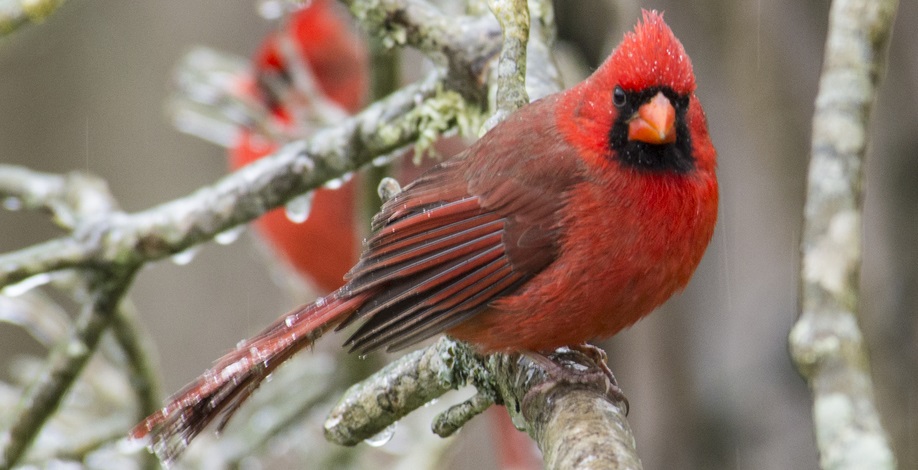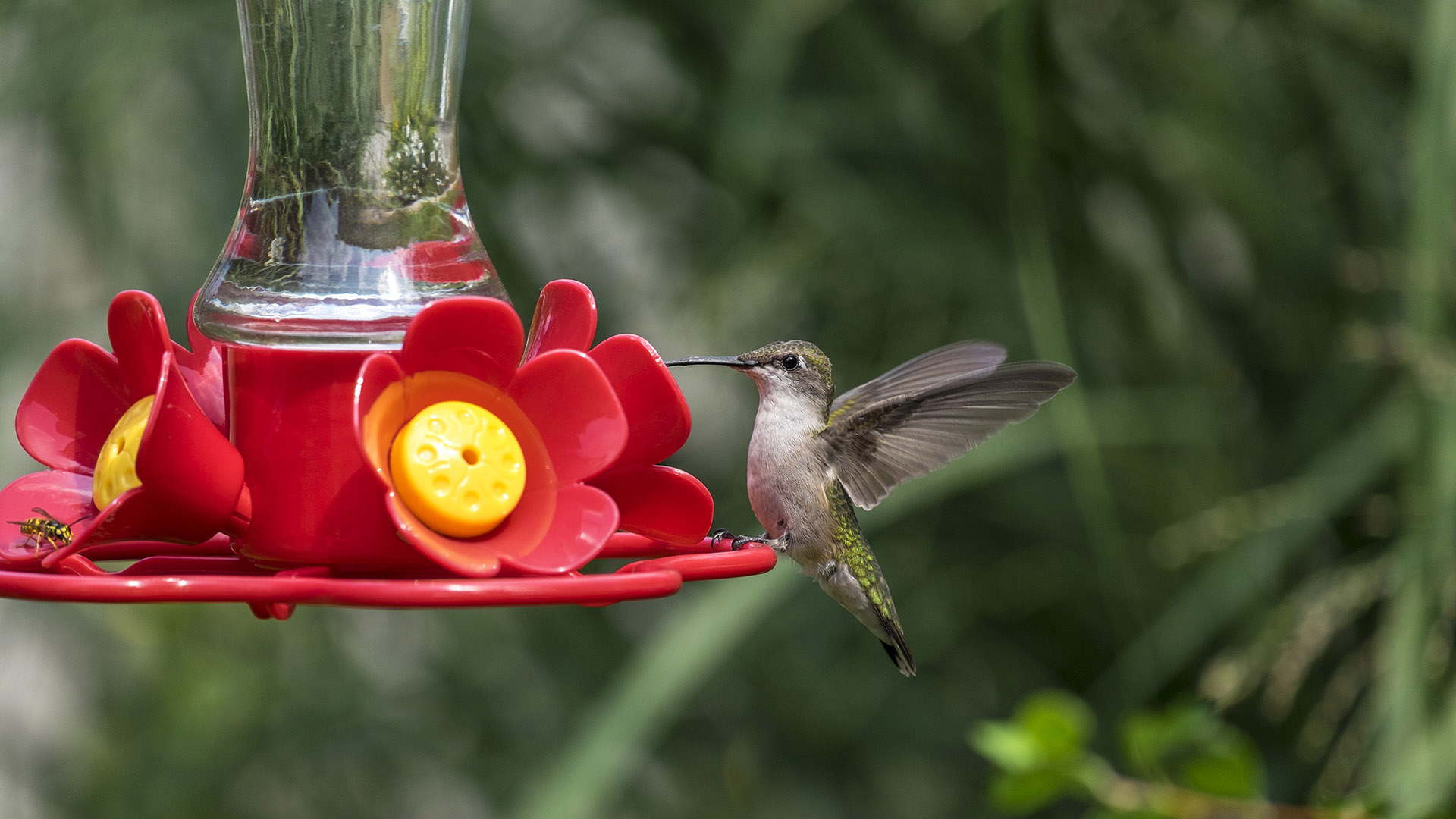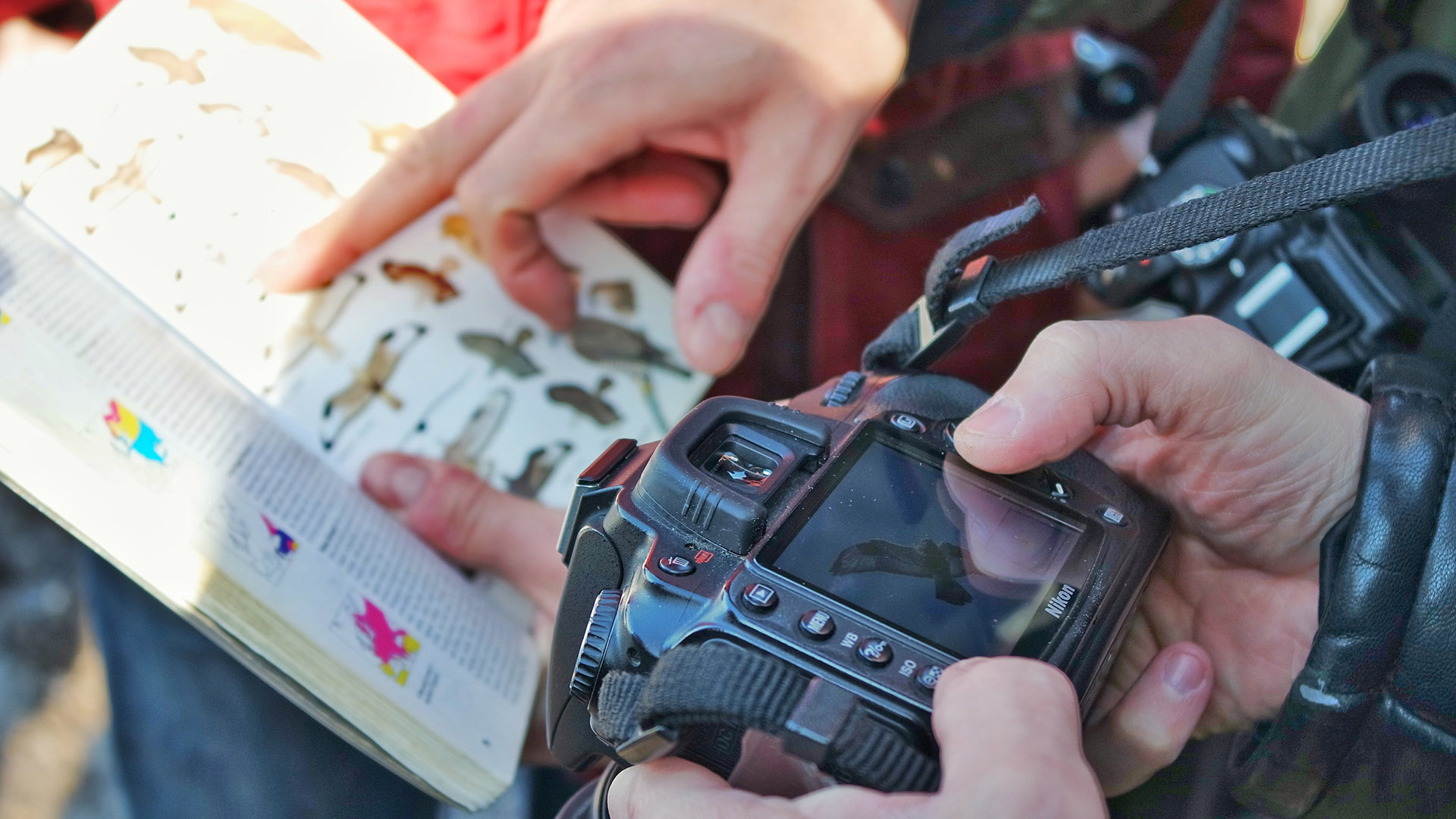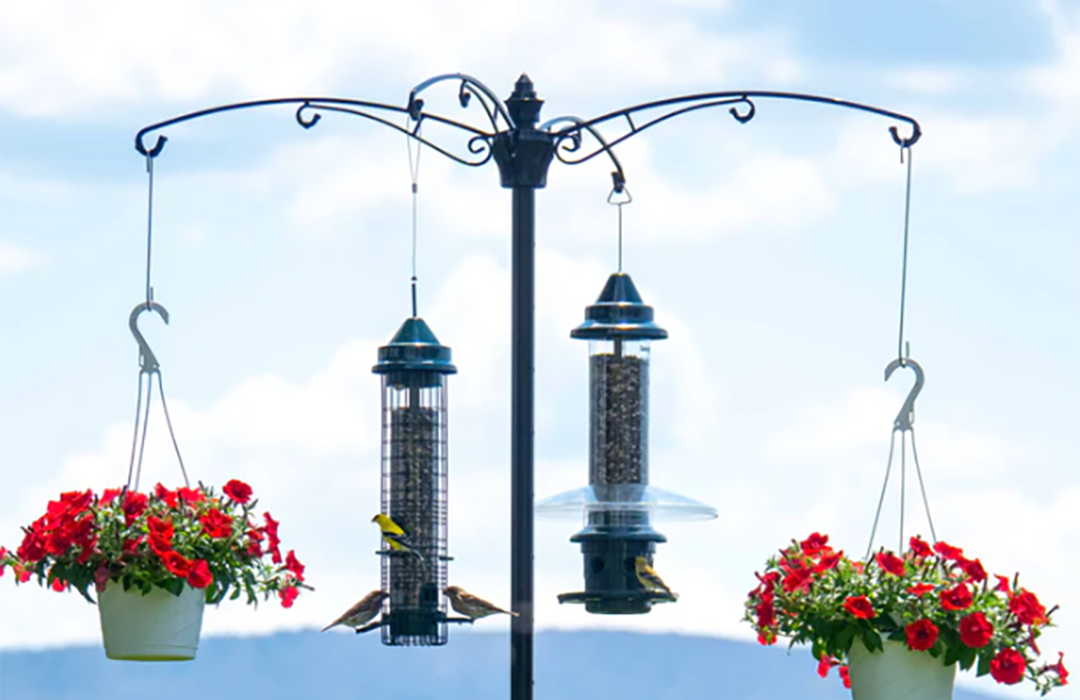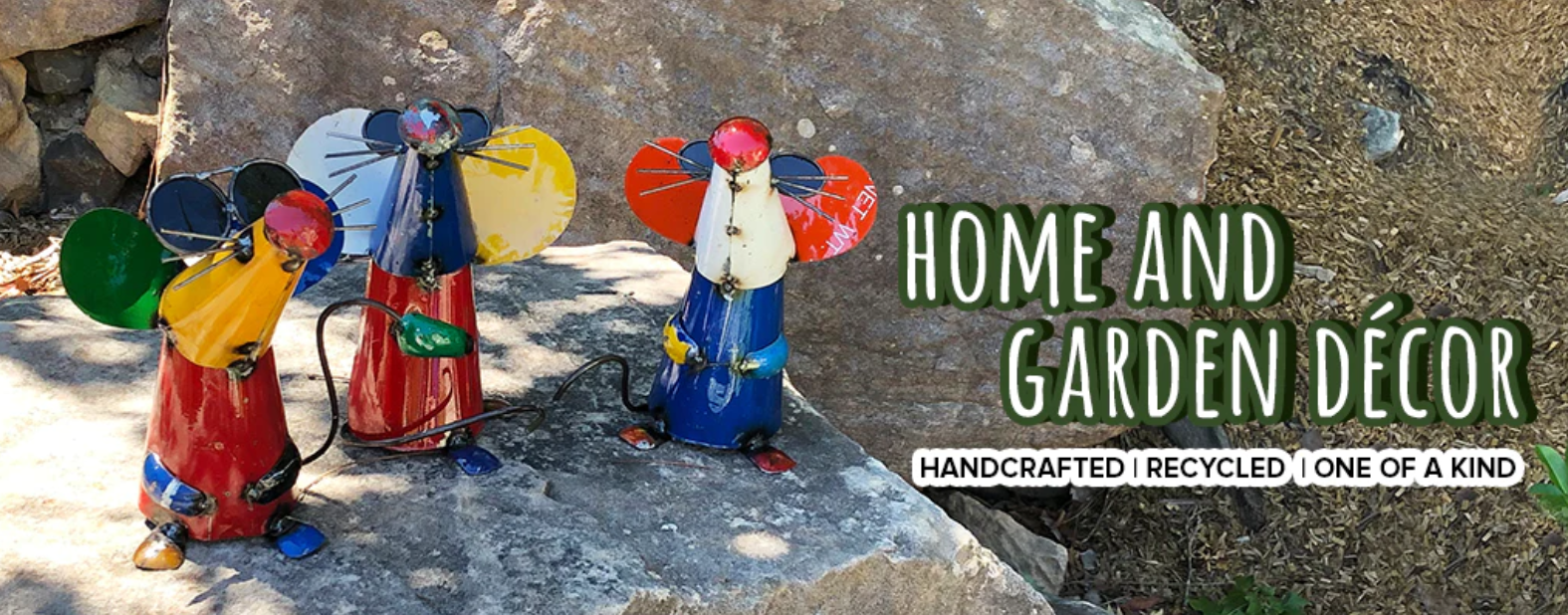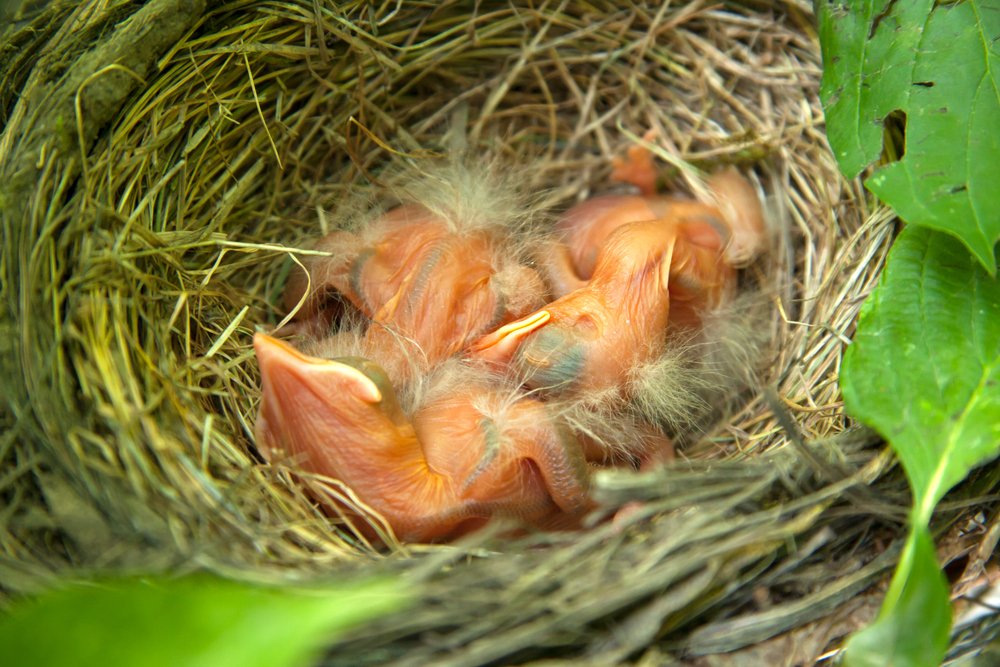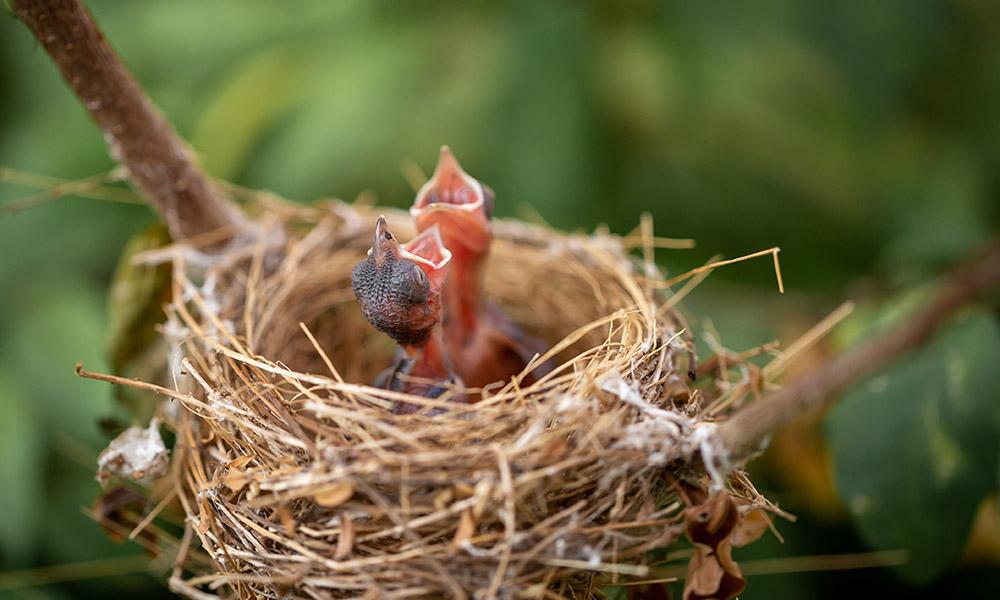The abrupt arrival of freezing temperatures is a clear sign that the vibrant fall season has swiftly given way to winter’s chill. With this shift in seasons and weather, our avian companions are also undergoing a significant transition to cope with the cold days and nights ahead.
It’s crucial that we adapt our approach to feeding, choosing the right nourishment, and providing water sources that won’t freeze. Additionally, creating a safe haven where our backyard feathered friends can find respite from the harsh conditions becomes even more critical during this time. As stewards of our outdoor spaces, let’s ensure we are well-prepared to support and protect our avian visitors through the winter months.
One of the best ways to show your love for birds during the cold weather season is to provide food for them.
Although birds are covered in layers of insulating feathers, they have a high metabolism and need plenty of food to stay warm and active. Bird feeders give us opportunities to observe our feathered friends up close and personal and to watch bird behavior, habits and interaction. By providing a variety of bird feeders filled with high-energy foods like suet, peanuts, and sunflower seeds, it gives them the fuel they need to keep their feathers fluffed!
There are a couple of bird food staples that you will want keep out year round. A mixed seed with white millet and black oil sunflower seed is the all-round go to for backyard bird feeding. It will attract the widest diversity of species to your yard.
Suet is one of the most important foods you can offer birds in winter. As we all know by now, birds need quality, high-calorie food all year long. In summer when food is abundant, birds also scavenge fat from animal sources remaining in the woods. In winter, birds can seek out seeds and berries that have remained on plants and trees, but finding sources of fat under a blanket of snow is almost impossible at a time when birds need this food the most.
Woodpeckers and nuthatches are particularly fond of suet that contains peanuts or peanut butter. To please your cardinals, offer suet with berries or fruit. Chickadees and titmice will love suet containing sunflower chips and tree nuts. If squirrels are trying to eat your suet, try cakes containing hot pepper. But no matter what flavor of suet you choose, you can be sure you’ll have lots of visitors at your suet feeders!
Peanuts will help to attract Tufted Titmice, Blue Jays, Crows, and will help you to manage your squirrel problem. If you are feeding birds you will attract squirrels. There is no doubt about that. So, why not make peace with the furry tailed rats by offering them peanuts. It beats them raiding your feeders and, in some cases, destroying the feeders altogether.
Birds are much more likely to die from dehydration in cold weather than lack of food.
People often overlook the need for fresh water especially during the winter season. Although natural food sources are scarce during the winter, dehydration can be an even bigger threat to birds than starvation. With freezing cold temperatures ahead of us, there will be fewer non-frozen sources of water to exist. Keep fresh water available by using a heated birdbath or regularly replacing water in freezing temperatures. Birds need to stay hydrated, even in winter!
Water is not only important for hydration, but it also helps birds preen their feathers. Without proper preening, birds’ feathers won’t stay positioned and aligned. Feathers out of alignment in winter create gaps in insulation, which makes birds lose body heat faster.
Birds may have to fly great distances in winter to find unfrozen water sources. Some birds take advantage of unfrozen sections in rivers or swift streams, but these are rare in some areas. Some birds take advantage of open water in lakes or ponds due to human aerating.
We can give birds access to unfrozen water right in our backyards by providing a heated birdbath. If you already have a birdbath that you like, but it doesn’t keep the water from freezing in winter, you can add a de-icer, a heating element that sits down in the basin. It’s not quite as convenient as a bath with a built-in heater, but it is an economical way to transform your present bath into something that will function in winter. The best ones are thermostatically controlled and most of these units turn on and off automatically when temperatures dip below freezing.
Wintering birds have done quite well in order to survive the coldest months. They’ve also learned to rely heavily upon humans for food, water, and shelter. The more we chip in and help, the better their chances of survival.
Create shelter by placing birdhouses or roosting boxes in your yard.
Extend a warm welcome to our feathered friends during the winter months by providing them with cozy shelter. By strategically placing birdhouses or roosting boxes in your yard, you’re creating a cozy refuge where birds can escape the bitter cold. These shelters provide essential protection from chilly winds and freezing temperatures, allowing birds to conserve energy and stay warm. It’s a heartwarming sight to witness them seek refuge in these safe havens, and your thoughtful gesture ensures their well-being during the challenging winter months. So, consider adding a touch of warmth to your outdoor space by providing shelter for the feathered residents of your neighborhood.
- Tagged: Backyard bird feeding, Bird Baths, bird feeders, birdbath, birds, black oil sunflower seed, built-in heater, cardinals, chickadees, de-icer, dehydration, food, freezing, heating element, mixed seed, nuthatches, shelter, Squirrels, suet, thermostatically controlled, titmice, water, white millet, winter, woodpeckers
Related Posts
Keeping Hummingbirds Happy and Healthy: The Importance of Fresh Nectar, Especially in Summer Heat
Hummingbirds are captivating creatures with
Brome Takes Flight at Backyard Birds: Introducing Two New Must-Have Products for Bird Lovers!
Backyard Birds is excited to
Introducing Think Outside: Where Creativity Takes Flight at Backyard Birds!
Calling all nature lovers and
It’s Baby Bird Season, Help Keep Them Safe with Backyard Birds!
Spring has sprung at Backyard

